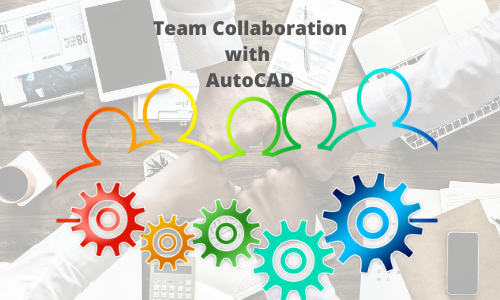Synametrics Technologies
Revolving around the core of technology
Team Collaboration with AutoCAD files
AutoCAD is one of the most popular CAD and drafting software applications used by many architects, engineers, and construction professionals. Often users have to work together in a team as well as share large drawings among each other. This document talks about different approaches companies currently take for team collaboration, shortcomings associated with these approaches, and finally, it provides a better solution.

Existing Practices For Collaboration When Using AutoCAD
Central Repository
Since engineers working on the same project often share files, they tend to use a shared folder, on a file server. This is easily done by mapping a drive on any Windows machine.Shortcomings include:
- Mapped drives require every user is within the same network and connected. For example, problem arises when the same engineers want to work from a remote office or when traveling.
- Accessing large files across the network for every read and/or write operation has negative affects of performance. Engineers could experience sluggishness while working on their drawings.
- No mobile access.
- File corruptions could occur if multiple engineers try to access a file simultaneously.
File sharing with external users
Several tools are typically used for this purpose, such as using public cloud services like Box, Dropbox, Google Drive. Another common approach is email attachments, provided the file size is not large.Shortcomings include:
- Most of these services offer a free account for limited storage but can become costly as number of files grow.
- There can be privacy issues, particularly if you're working with a government or for an organization bound to comply with certain regulatory procedures.
- Since files must first be uploaded to the service provider's network, spontaneous access is often not possible. Consider an example when an engineer needs a particular drawing during a meeting with the management team.
Multiple file versions:
AutoCAD automatically creates a*.BAK for every *.DWG file when it is saved. Users can
easily
restore
a previously stored *.BAK file. Additional copies can be created manually to store unlimited versions of a drawing. A common practice is to rename the files according to their revision numbers, such
as
MasterPiece-Rev1.dwgMasterPiece-Rev2.dwgMasterPiece-Rev3.dwgMasterPiece-Rev4.dwg
Shortcomings include:
- AutoCAD document files tend to be large. A typical drawing with 10 revisions could easily consume 200 MB of disk space. Matters only get worse as you add more drawings, each with multiple versions. Using this approach, the disk usage can easily grow into terabytes.
- Since AutoCAD does not maintain multiple file versions, engineers have to manually deploy versioning techniques.

A Better Solution
One solution that addresses every shortcomings mentioned above is Syncrify. Here are some benefits of using it.
Shared Projects
The Shared Projects allow engineers to have a local copy of every drawing. This local copy is automatically synchronized with the central copy of the file on the server. This feature offers the following benefits:- Engineers will not have to connect to the File Server in order to view or modify files.
- They can work on the files even when traveling. Syncrify will automatically synchronize the file when this connect to the network next time.
- Disk I/O is much faster eliminating the speed issues when accessing remote files.
Automatic Versioning
Syncrify is able to create unlimited versions of your drawings. Engineers can switch to any previous version they need. Additionally, multiple engineers can work on a file simultaneously. Syncrify will keep both versions.The most important benefit of versioned files in Syncrify is its ability to store deltas. For example, if version the first version of the document is 30MB and someone makes a minor adjustment, the following version will only contain the changes, which tremendously reduces disk space. If you have 10 versions of a 30MB document, the most recent version will be saved in its entirety (30MB). The rest of the versions will be stored on the disk as deltas and therefore, will only consume a small fraction of 30MB.
File Sharing
Easily share large files with colleagues. Anyone on the Internet can either send or receive large files from you. No third-party gets involved when sharing files.
Mobile Access
Files that are stored on your local machine could be easily be accessed from any mobile device. Consider an example when you're trying to access a previously created file during a meeting with your client. You can easily send a copy of the file right from your phone.
Cost
Using Syncrify is extremely cost-effective for the following reasons:- Licenses are perpetual - you pay once and use it forever.
- Licensing is based on number of machines. For example, if you have 10 computers, your cost will be $441. Click here for details.
- Pricing is not based on file size. This means you could have unlimited file storage and versions.
- Unlimited users.
Summary
Team collaboration is a common practice when engineers and architects use AutoCAD. Built-in features only go so far and as a result companies have deployed in-house solutions to overcome the challenges. Syncrify offers a one-stop solution providing several features that otherwise would cost significantly more.
What methods do you use when working with AutoCAD? Share your thoughts in the comments area below.
| Created on: | Sep 11, 2020 |
| Last updated on: | Apr 19, 2024 |
